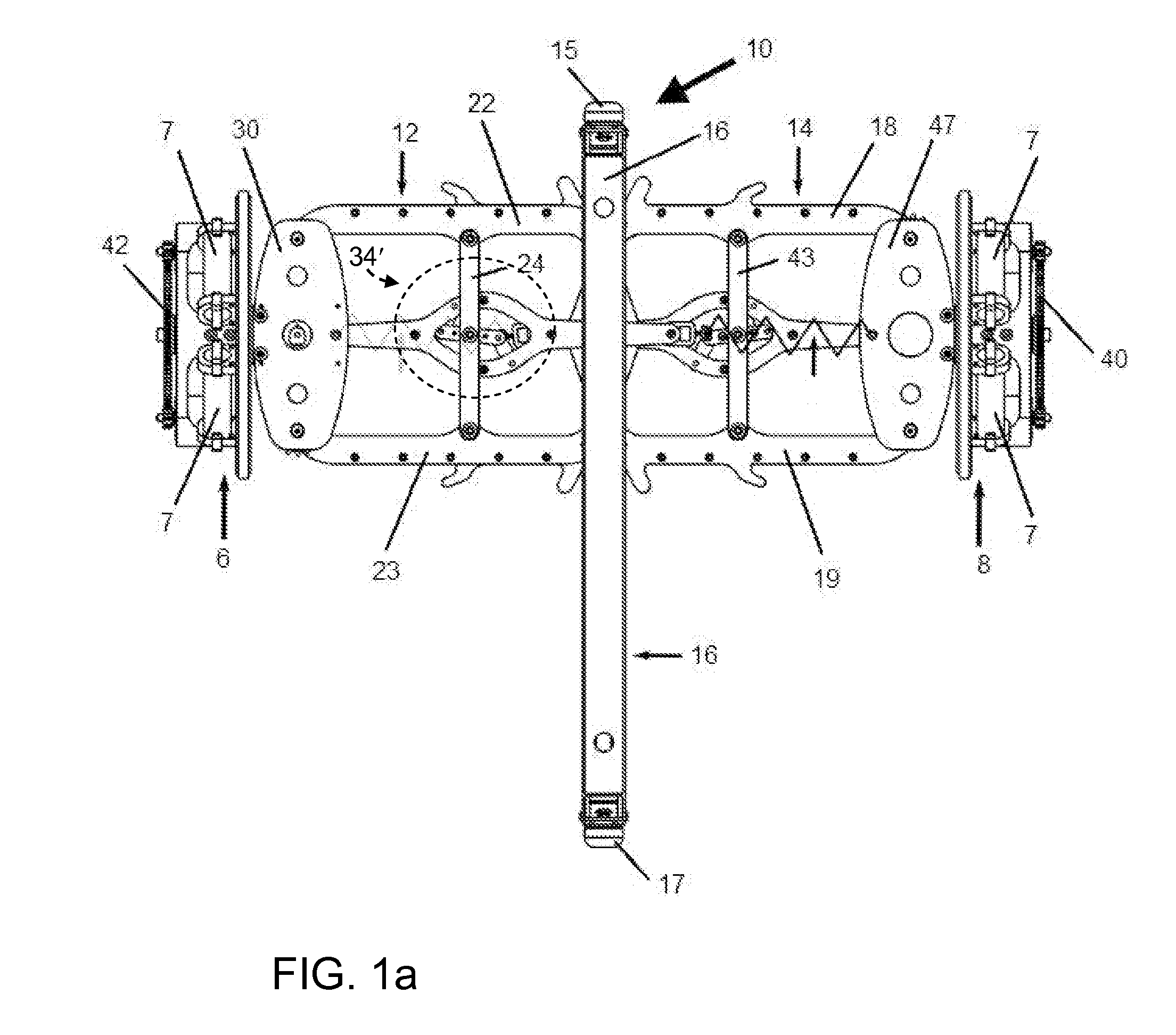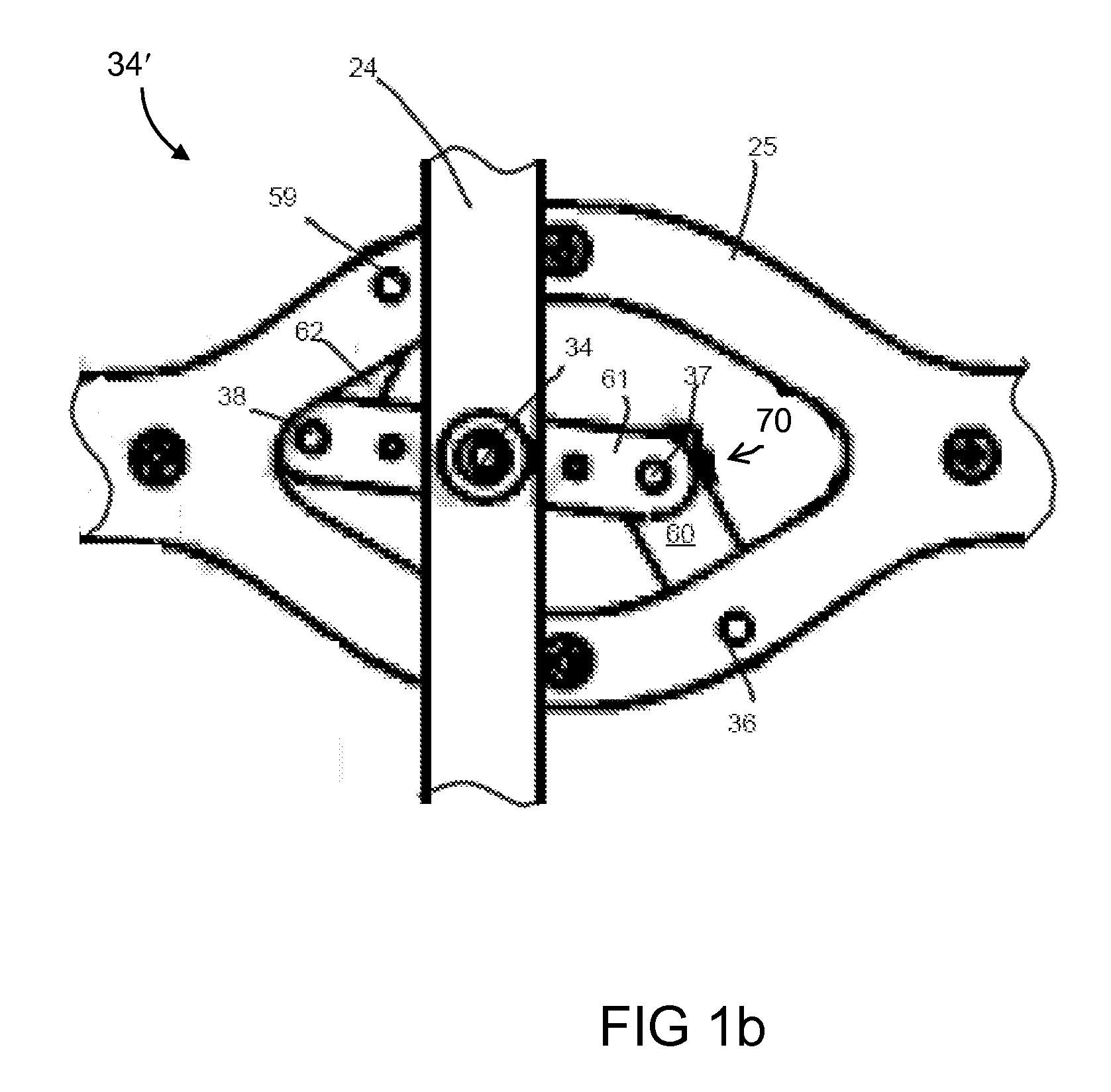Multimodal Dynamic Robotic Systems
a robotic system and multi-modal technology, applied in the field of robotic mechanisms, can solve the problems of increasing the overall size and weight of the robot, and significant deficiencies of the wheeled mobile robot that have not been adequately overcome, so as to achieve the effect of moving and functioning efficiently
- Summary
- Abstract
- Description
- Claims
- Application Information
AI Technical Summary
Benefits of technology
Problems solved by technology
Method used
Image
Examples
first embodiment
[0090]The multimodal robot of the first embodiment can be fitted with optical, audio, thermal, chemical and other environmental sensors, or a combination of different sensors, which can be used to provide input into an adaptive system controller, e.g., artificial intelligence to allow the vehicle to develop a situational awareness that will permit predictive path planning in complex environments. Alternatively, or in addition, the vehicle can have incorporated into its electronics a transceiver for receiving remote commands and for transmitting information collected by its sensors.
[0091]The robotic system described herein is useful for maneuvering within complex structures or rugged terrain via different combinations of hopping, pole climbing, toe balancing, horizontal roving and uprighting, all in a controlled fashion. For example, the robotic system can climb stairs using a combination of pole climbing and toe balancing to climb stairs.
Second Multimodal Robot Embodiment
[0092]A sec...
second embodiment
[0104]The multi-modal robot of the second embodiment is capable of performing a wide variety of maneuvers with the minimal set of actuators, thus saving cost and weight. Additional sensors can be mounted internally or externally, such as contaminant sensors, Global Positioning System (GPS) receivers, wind sensors, analog or digital cameras, optical or radiation sensors, among many other possible uses. End effectors may be mounted on the mobile robot platform 104 or arms 110, 120 or 119, such as linkage mechanisms with a gripper, solid or liquid collection systems, lighting systems, or weapons systems, among many others.
[0105]An alternative configuration of the second multimodal robot embodiment is illustrated in FIGS. 16a-c. In this configuration, shifting of the center of gravity is still used, however the manner in which the shifting is effected is different.
[0106]In this embodiment, the robot includes a chassis 148 and an actuated boom 150. The chassis 148 is driven by a pair of ...
third embodiment
[0113]In a third embodiment, a spherical robot incorporates momentum exchange devices to achieve rapid acceleration or deceleration in any direction.
[0114]As illustrated in FIG. 23, an exemplary embodiment of the spherical robot according to the present invention includes a frame 202 for supporting a plurality of momentum-exchange elements 204 so that the elements are distributed relative to the surface of a spherical shell 210 that encloses the frame 202, elements 204, and all control electronics, actuators and batteries that are required to power and control the robot. Sensors may also be included to provide feedback to optimize balancing and locomotion under different conditions. The control electronics may include wireless communication devices for communication with a remote computer, mobile phone or other wireless device. Alternatively, the spherical robot may be tethered to a controller, such as a joystick, track ball or the similar external control device.
[0115]The basic ele...
PUM
 Login to View More
Login to View More Abstract
Description
Claims
Application Information
 Login to View More
Login to View More - R&D
- Intellectual Property
- Life Sciences
- Materials
- Tech Scout
- Unparalleled Data Quality
- Higher Quality Content
- 60% Fewer Hallucinations
Browse by: Latest US Patents, China's latest patents, Technical Efficacy Thesaurus, Application Domain, Technology Topic, Popular Technical Reports.
© 2025 PatSnap. All rights reserved.Legal|Privacy policy|Modern Slavery Act Transparency Statement|Sitemap|About US| Contact US: help@patsnap.com



